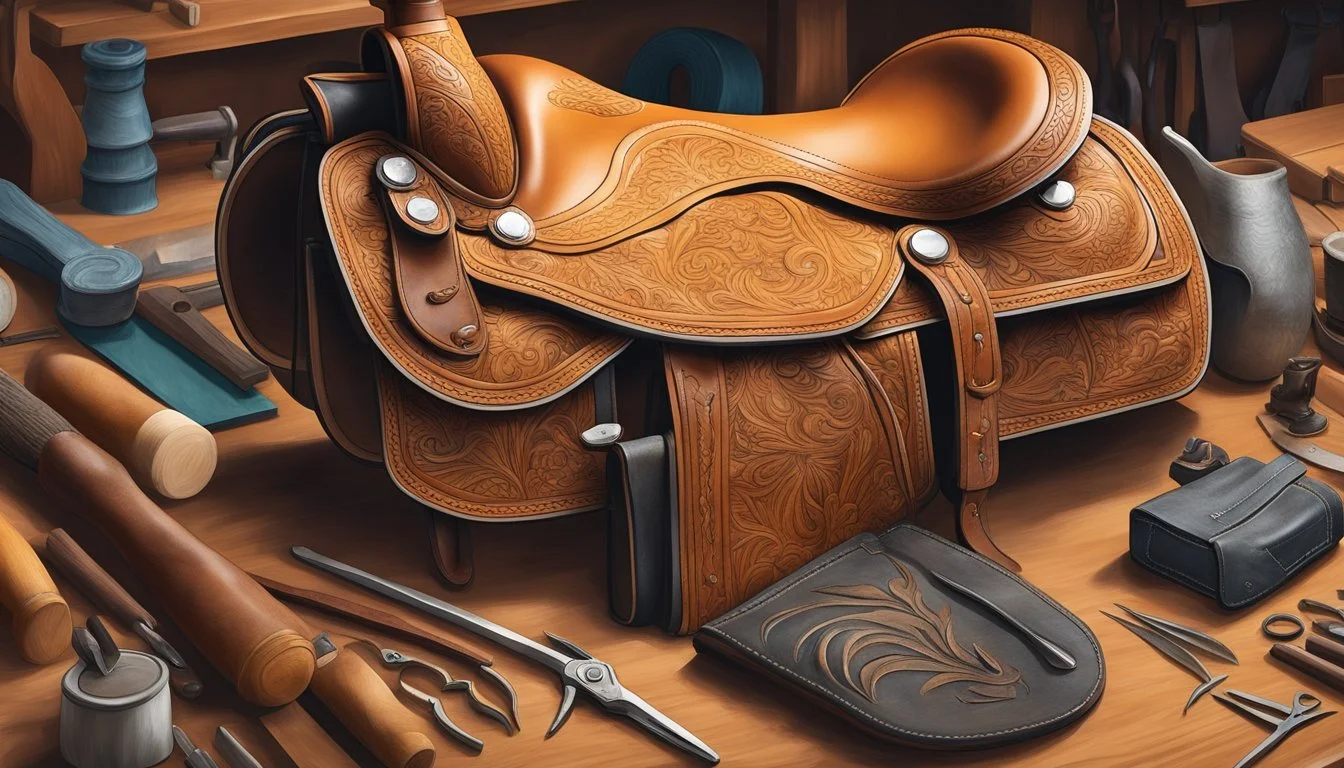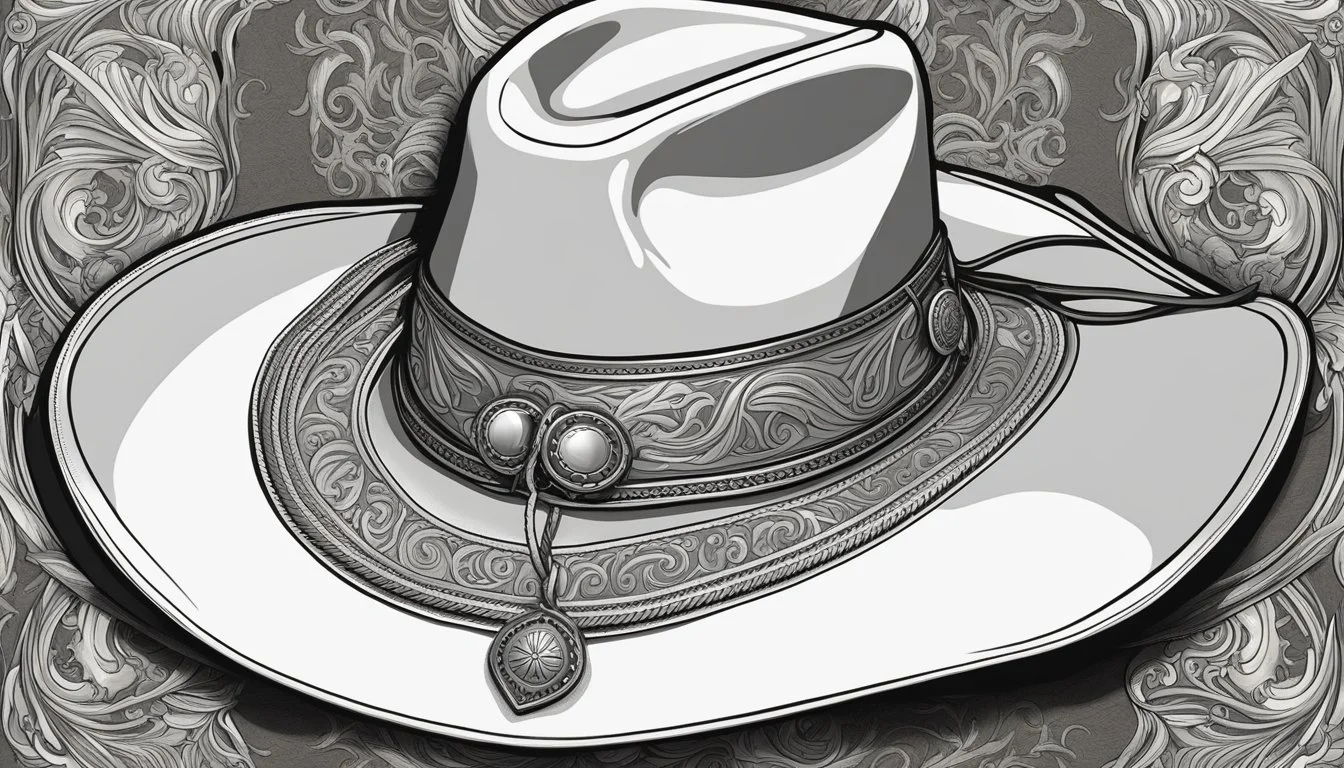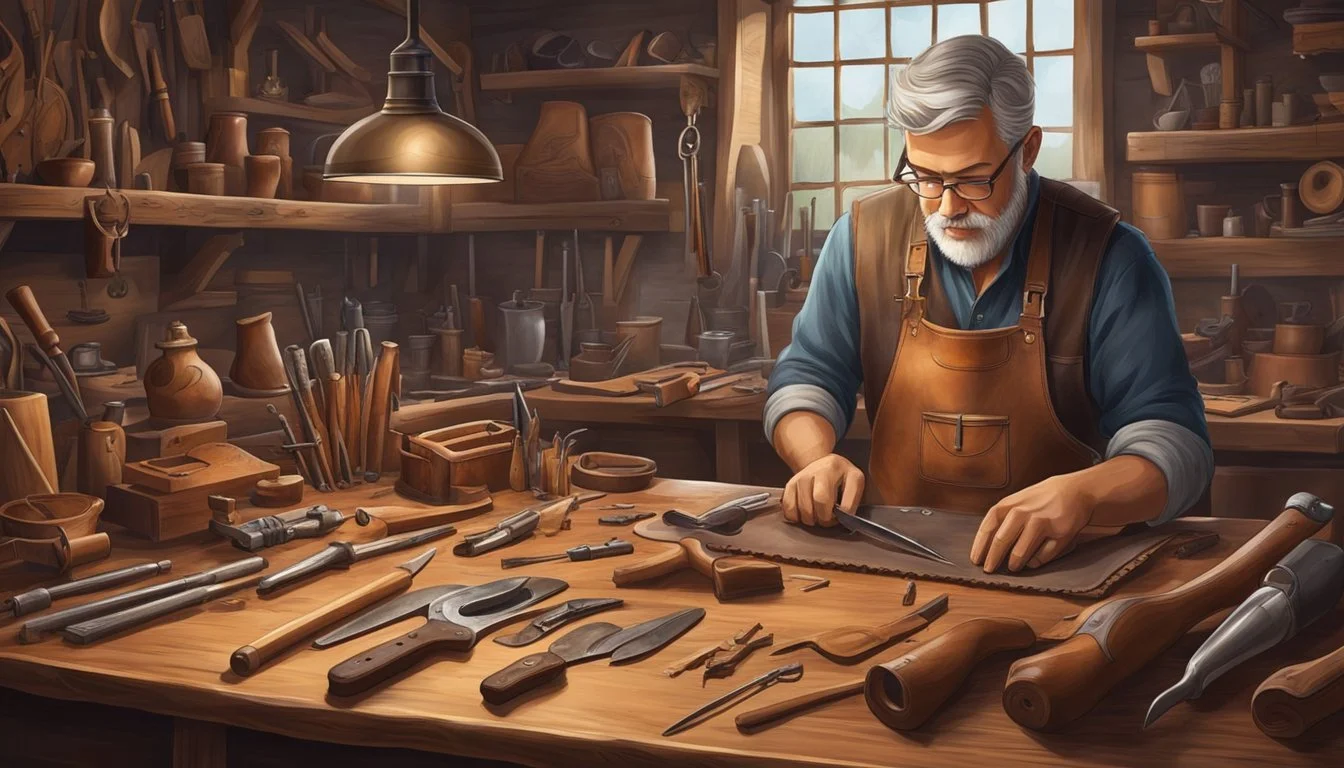The Art of Texas Saddlery
Preserving a Legacy of Craftsmanship
In the heart of Texas, saddlery is not merely a craft but a storied tradition that intricately weaves the state's rich history with its contemporary culture. Texas saddlery epitomizes a legacy of craftsmanship that has been honed over generations, a testament to the enduring relationship between Texans and their cherished equine partners. The creation of a saddle in Texas is not just about function; it is an art form that reflects the rugged beauty and spirit of the Old West. Each saddle produced by local artisans is a singular piece, marrying the practical needs of horseback riders with the aesthetic appreciation for hand-tooled leather and bespoke design.
Saddlers in Texas are keepers of this age-old craft, with many workshops like the renowned West of the Pecos Saddlery highlighting the dedication to quality and the personal touch inherent in their work. The precise skill and meticulous attention to detail employed in these shops ensure that every saddle is not only durable but also a unique piece of art. They uphold the values of the Traditional Cowboy Arts Association by preserving and honoring techniques long associated with the western way of life.
At establishments such as Texas Saddlery, the blend of accumulated knowledge spanning decades with contemporary innovations results in saddles that are both steeped in tradition and tailored to modern requirements. They echo the history of the Lone Star State while serving the contemporary cowboy, making each saddle a proud symbol of Texas heritage. The craftsmen's pride in their work ensures that the classic look of the Old West is preserved, all while embracing the nuances demanded by today's riders.
History of Texas Saddlery
Texas saddlery emerged as a defining craft that underscores both the state's rich history and its transformative period during the settlement of the American West.
Origins and Early Influences
The inception of Texas saddlery can be traced back to an era when Native Americans and Spanish cowboys, known as vaqueros, first roamed the Texan landscape. The initial adaptations for horseback riding were rudimentary, usually bareback or with simple cloths. As horses became integral to travel and labor, the necessity for a more functional and durable saddle was clear. Saddles evolved, influenced heavily by Spanish designs, which were themselves adaptations of earlier Moorish saddlery. These saddles were designed to provide comfort over long hours of use and were sturdily built to withstand the demands of the rugged Texan terrain.
Wild West Show and the Stelzig Family Legacy
By the late 19th century, Texas had entered the fabled era of the Wild West Show, an entertainment spectacle that popularized the cowboy lifestyle and Texas saddlery. The Wild West Show was a touring performance featuring a variety of frontier-themed acts. Intricately tooled leather and durable construction became hallmarks of the saddles used in these shows, undoubtedly influencing saddle makers of the time.
The Stelzig family, whose roots trace back to Galveston and Houston, cemented their legacy during this period. They become synonymous with high-quality Texas saddlery. Originating in the 19th century, the Stelzig Saddlery began as a humble leather goods store in Houston and over time expanded to Galveston, eventually becoming an iconic brand. The Stelzig tradition of craftsmanship continued through generations, adapting to changes but always maintaining the meticulous attention to detail that Texas saddlery is renowned for. Even as brick-and-mortar stores have faded, the Stelzig name endures in the craft, embodying the art and spirit of Texas Saddlery.
Saddlery Materials and Tools
In the realm of Texas saddlery, both the selection of quality materials and the precision of specialized tools are paramount. These elements together allow for the creation of durable, functional, and aesthetically pleasing saddles.
Leather Quality and Types
Texas saddlery primarily uses high-grade leather due to its durability and ability to hold shape. Leather types include black leather and hand-carved varieties, known for rich texture and strength. This foundational material is chosen with care to ensure it can withstand the rigors of cowboy life.
Hardware and Embellishments
Saddles are not just functional; they are also a canvas for artistry. Hardware such as tacks and conchos add decorative touches while providing structural elements. While tacks secure layers of leather, conchos, often made from silver or bone, offer unique designs that reflect the saddle maker's artistry and the owner's personal style.
Tools for Leather Work
The craft of saddle making uses an array of tools designed for intricacy and precision. Hammers are essential for securely placing tacks and creating even creases in the leather. Various tools cut, shape, and detail leather, allowing artisans to maintain traditional methods while adapting to modern designs and needs.
Saddle Making Process
The craft of saddle making combines functional design with artistic embellishment. It requires a thorough understanding of both the rider's needs and the horse's comfort. Detailed craftsmanship is evident in every component, from the durable foundation of the saddle tree to the intricate leather work of the finishing touches.
Design and Functional Components
Saddles are designed to meet specific riding disciplines and must address the comfort and security of both horse and rider. The components include the horn, a prominent feature used for roping cattle, and necessary attachments such as fenders, which protect the rider's legs. Detailed measurements and tailored designs are paramount to ensure the saddle's function and fit.
The Saddle Tree: Foundation of Durability
At the core of every saddle is its tree, a frame that determines the saddle's shape and strength. Traditionally crafted from high-quality wood and then covered with rawhide or fiberglass, the tree's durability is essential for supporting weight and distributing it evenly across the horse's back.
Assembling the Rigging and Fenders
Rigging refers to the configuration of rings and plates that secure the saddle to the horse, critical for stability. High-quality leather is cut and shaped for the fenders, then strategically attached, allowing for seamless movement and alleviating stress on the horse's back and the rider's legs.
Finishing Touches and Aesthetics
The final stage of saddle making is where aesthetics align with functionality. Skilled artisans add decorative elements through elaborate leather work, maintaining the saddle's robustness. Designs range from simple to ornate, often reflecting the saddle maker's unique style and the cultural heritage of Texas saddlery.
Distinctive Styles and Customizations
The art of Texas saddlery stands as a testament to its rich heritage, with styles and customizations that reflect the region's history and the practical needs of its horsemen.
Texas versus Other Regional Styles
Texas saddlery is known for its distinctive designs that differ from other regional styles seen in, for example, Colorado or California. Texas saddles often feature intricate tooling and hand-stitching that set them apart. While Colorado styles might lean towards durability for the Rocky terrain, California saddles have been influenced by Spanish traditions, evident in their ornate and flowing patterns. Texas saddlery, hallmarking the Lone Star State's spirit, marries functionality with grandeur.
Custom Saddles for the Working Cowboy
Custom saddles are specially crafted to meet the unique needs of working cowboys. Artisans from cities such as Wichita Falls and El Paso specialize in creating saddles that are tailored not just to the rider's body but also to their riding discipline and the work at hand. Customization options include:
Seat size and shape: to ensure comfort during long hours on the trail.
Horn style: reflecting the type of cattle work being performed.
Leather tooling: to add a personal touch or identify the ranch.
Trophy Saddles and Commemorative Pieces
Trophy saddles serve as awards and markers of significant achievements and are often more decorative. These saddles might be presented at rodeos or as commemorative pieces to honor someone's contributions to the saddlery industry. They are highly valued, collectible items that showcase:
Elaborate silverwork
Detailed embossing
Custom plaques or inscriptions
Emphasizing the celebration of heritage and triumph, trophy saddles from Texas are as much a work of art as they are a symbol of recognition.
Additional Gear and Accessories
Texas saddlery goes beyond the saddle, encompassing a range of gear and accessories that are integral to the cowboy lifestyle. Each piece is crafted with purpose and longevity in mind, serving both functional needs and personal style.
Chaps, Spurs, and Boots
Chaps are protective garments, typically made from sturdy leather, designed to guard a rider's legs from the elements and brush. They come in various styles including the full-length "shotgun" and the fringed "batwing."
Spurs serve as a communication tool between rider and horse, with intricate designs that reflect individual flair. Their use is an art that requires precision and a gentle hand.
Boots are not just footwear; they're a cowboy's foundation. Quality boots are constructed for comfort during long rides and durability to withstand harsh conditions. They often feature detailed stitching and can be fashioned from a range of leathers.
Cowboy Hats: Beyond Functionality
The cowboy hat is iconic, transcending its role as mere sun protection. Its shape, materials, and design can denote a rider’s occupation, origins, or personality. The construction is crucial—the material, whether it be felt or straw, is selected based on the season and usage.
Jewelry and Western Wear
Jewelry in Texas saddlery tradition isn't solely for adornment. Often, it tells a story or signifies membership in a particular community; silver belt buckles can denote achievement or status.
Western wear combines practicality with style. Garments are made to last, with materials such as denim and leather being staples. Shirts and jackets often bear distinctive patterns or embroidery that pays homage to the Western aesthetic.
Cultural Impact and Modern Evolution
The Texas saddlery industry has a rich cultural heritage that has evolved through innovation and adaptation. It remains a vital part of contemporary Western life and identity.
The Role of Saddlery in Western Identity
In Texas, saddlery is more than just a functional item; it is a symbol of the Western way of life. It embodies the rugged individualism and the skillful artisanship that have shaped the identity of cowboys and ranchers for generations. Saddles are not only utilitarian tools but also represent cultural artifacts, showcasing intricate leatherwork and design.
Innovations and Technological Advancements
Over the years, innovation has played a crucial role in the evolution of saddlery. Craftsmen have leveraged technological advancements to improve comfort, durability, and the overall functionality of the saddle. For example, advances in materials have led to the production of lighter and more resilient saddles. These innovations are a testament to the ongoing exchange of knowledge and techniques among saddle makers, not only in Texas but extending to regions such as Mississippi, Denver, and even the East Coast.
Saddlery in Contemporary Western Life
Today, Texas saddlery continues to thrive as both a craft and a necessary aspect of ranch work. Modern craftsmen incorporate contemporary designs without compromising the integrity and time-honored traditions of classic saddlery. Saddles are still made to meet the needs of working cowboys, but they also serve a growing market of enthusiasts who appreciate Western heritage. The industry adapts to modern life while remaining deeply rooted in the traditions that have defined it for centuries.
Saddle Shops and Artisans
Texas is known for its rich tradition in saddlery, with saddle shops and artisans upholding a legacy of quality and craftsmanship. These establishments not only serve as hubs for the creation of functional riding gear but also as centers for the preservation and transmission of traditional leatherworking skills.
Famous Texas Saddle Makers
West of the Pecos Saddlery and Oliver Saddle Shop stand out as iconic establishments in the Texas saddle making scene. They are recognized for their commitment to quality and their role in maintaining the cowboy culture. For example, West of the Pecos Saddlery, operating out of Pecos at 123 S. Oak St., provides not only a range of saddlery products but also services like saddle rehabilitation. Their operations run from 10 a.m. to 5:30 p.m., Monday through Friday, and until 1 p.m. on Saturday.
In contrast, Oliver Saddle Shop in Amarillo is lauded as the oldest family-owned saddle shop in the state, rooted deeply in tradition and renowned for its artisan-crafted saddles. Shops like these are a testimony to the lively community of leather craftsmen in Texas, dedicated to sustaining the integrity and beauty of the trade.
Apprenticeship and the Transmission of Skills
The continuity of Texas saddlery's distinct style and quality largely depends on the apprenticeship model. Experienced saddle makers pass on their knowledge and techniques to apprentices, ensuring that the craft lives on through generations. These apprentices learn not only the functional aspects of creating durable riding equipment but also the nuances that make each saddle a piece of art.
The artisans teach their apprentices to select the right materials, shape the leather, and customize designs to meet the riders' needs, making the saddle shop a critical environment for learning and preserving the craft. These educational interactions contribute to a vibrant culture surrounding Texas Saddlery, leading to a diverse yet unified community of leather craftsmen dedicated to excellence.
Keeping the Tradition Alive
The art of Texas Saddlery thrives through continuous education and active community participation, ensuring the craftsmanship and leather work tradition is passed down through generations.
Educational Resources and Literature
Books and literature play an essential role in keeping the tradition of Texas Saddlery alive. Enthusiasts and prospective saddle makers can turn to a wealth of written materials for guidance. For example:
The Dynamics of Saddle Design: A seminal book that guides readers through the functional aspects of saddles, emphasizing ergonomic designs.
Leather Crafting for Beginners: Offers a step-by-step approach to basic leather work, a foundational skill in saddle making.
These and other books not only serve as instructional guides but also help to preserve the rich history and techniques of the craft.
Community Events and Saddle Associations
Community engagement spearheads the preservation of saddle craftsmanship. Events such as workshops and fairs offer hands-on experiences, while associations provide a platform for saddle makers to share knowledge and resources. Key community activities include:
Annual Saddle Making Competitions: Where craftsmen showcase their skills and the public can witness the intricacies of saddle construction.
Monthly Meet-ups: Organized by local saddle associations, these gatherings can include demonstrations, discussions on leather work trends, and networking opportunities.
Saddle Making Workshops: Often hosted by veteran craftspeople, these workshops teach the art of saddle making, from leather selection to the final stitching.
Such events support the overarching goal of sustaining and advancing Texas’s rich saddle making heritage.








